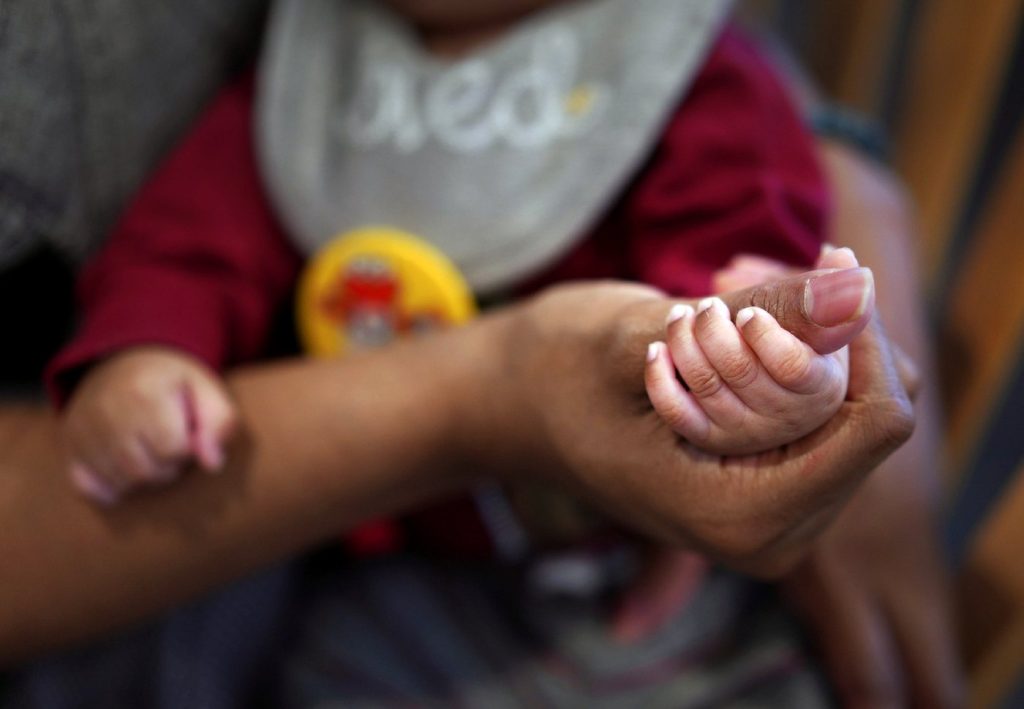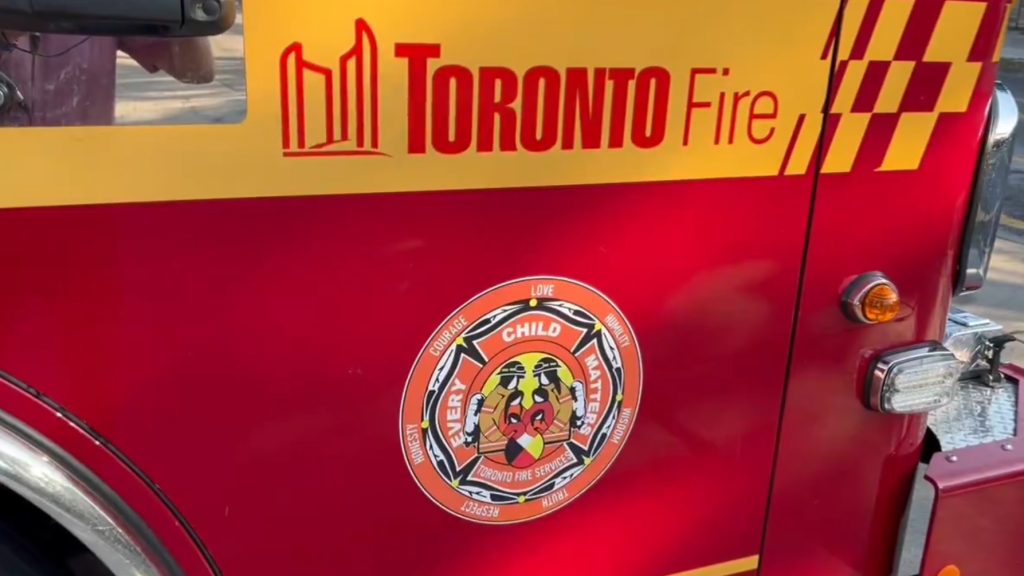After the end of Roe, a new beginning for maternity homes

Posted August 2, 2024 8:02 am.
Last Updated August 2, 2024 8:13 am.
ORANGE, Va. (AP) — On the wall of the maternity home, painted in large letters, is the motto: “Saving Babies, One Mom at a Time.”
For founders Randy and Evelyn James, the home started with one baby — their own.
Paul Stefan was the last of their six children, born with a fatal condition. They had chosen not to abort the pregnancy as doctors advised. He lived just over 40 minutes, long enough to be baptized and named after their Catholic priest.
In the nearly two decades since, the Jameses have channeled their son’s memory and their anti-abortion beliefs into running maternity homes. “We knew that we were going to do something for women in crisis pregnancies,” Evelyn James said.
In August, their Paul Stefan Foundation plans to open a new floor with seven more rooms at their headquarters in a grand former hotel in Orange, Virginia.
Their momentum is part of a larger trend: There has been a nationwide expansion of maternity homes in the two years since the Supreme Court overturned Roe v. Wade and the federal right to abortion.
“It’s been a significant increase,” said Valerie Harkins, director of the Maternity Housing Coalition, a nonprofit anti-abortion network of 195 maternity homes that has grown 23% since the court’s ruling.
There are now more than 450 maternity homes in the U.S., according to Harkins; many of them are faith-based. As abortion restrictions increase, anti-abortion advocates want to open more of these transitional housing facilities, which often have long waitlists. It’s part of what they see as the next step in preventing abortions and providing long-term support for low-income pregnant women and mothers.
“This is what supports the women in following through on their yes to carry that pregnancy to term,” Harkins said. “Whether that’s a yes that they chose or maybe they felt like they didn’t have a choice.”
The reasons for the surge in interest in maternity homes are complex and go beyond narrowing abortion access. Harkins said unaffordable housing, paychecks cut by inflation and higher birthrates in some states have all contributed.
“It created a perfect storm,” she said. “There’s quite a need.”
A Painful Legacy
The heyday of American maternity homes came during the three decades before Roe v. Wade. In what became known as the “Baby Scoop Era,” more than 1.5 million infants were surrendered for adoption. Many unwed pregnant women and girls were sent to live in maternity homes, where they were often coerced into relinquishing their babies.
“Our children were stolen,” said Karen Wilson-Buterbaugh. She was 17 in 1966 when her parents sent her to a Washington, D.C., home run by Florence Crittenton, a large chain of maternity homes started by Progressive-era Episcopal reformers.
Back then, maternity homes were secretive places, meant to hide pregnancies. Residents often used aliases. Some wore fake wedding rings in public. When they returned to their hometowns after birth and without a baby, they were supposed to pretend as if nothing happened.
But few could forget.
“It’s a mother losing her child,” said Ann Fessler, who collected oral histories from Baby Scoop Era mothers in her book, “The Girls Who Went Away.”
Fessler, herself an adoptee, said, “The women, especially the ones that did not feel like they had a part in the decision, live with this trauma the rest of their lives.”
Harkins said the Maternity Housing Coalition takes ownership of this history. It’s often discussed among members and at conferences.
“It is very dear to our hearts,” Harkins said. “We are very intentional about what happened and want to ensure we don’t get to that point again.”
The number of domestic infant adoptions has fallen sharply since the 1970s. When denied an abortion, women in one study overwhelmingly chose parenthood (91%) over adoption (9%), according to a 2016 analysis from researchers at the University of California San Francisco.
As the stigma of single parenthood has waned, most residents in modern maternity homes choose to keep their children. Where maternity home residents once were largely middle-class, now poverty is a driving factor: Mothers are there to receive housing and financial support during and after their pregnancies, sometimes for years after giving birth.
There are now maternity homes that specialize in keeping children out of the foster care system. Others have honed their expertise in addiction recovery. And while many will help with adoptions, some continue to prioritize them and have ties to adoption agencies — which can still result in painful outcomes.
Abbi Johnson was 17 and pregnant in 2008 when her parents sent her to Liberty Godparent Home, a project of the late Jerry Falwell, the evangelical founder of the Moral Majority and Liberty University. The Lynchburg, Virginia, maternity home was connected to an adjacent adoption agency.
Homeschooled and raised in a conservative Christian family, Johnson felt her unplanned pregnancy was treated as “the most cardinal sin,” but she still desperately wanted to parent her son.
“But everyone told me this isn’t playing house. He’s not a doll. He deserves a married couple who has their life together,” she said.
The home said in a statement that every resident is educated on parenting and adoption “and has the freedom to choose.”
In the end, Johnson felt pressured into placing her son for adoption. She posts on social media under the handle “ voicelessbirthmother,” hoping that one day her son might know how much she misses him.
“Half my head resides in that maternity home,” she said, “playing the memories again and again and again.”
“Where can I live with this baby?”
Before she moved into a maternity home, Meryem Bakache considered an abortion.
Newly arrived in the United States from Morocco, Bakache spoke little English and lived in a crowded apartment with family in northern Virginia while her husband attended college in West Virginia.
“Where can I live with this baby?” she recalled thinking. “What can I give him? I don’t have nothing.”
Without health insurance, she looked for medical care and found an anti-abortion counseling center — often called a crisis pregnancy center — which provided her with an ultrasound.
“When I see my baby, just like everything changed,” she said.
The center’s staff encouraged her to keep the child and look for housing. Through a friend, she found Mary’s Shelter, a maternity home in Fredericksburg, an hour east of the Paul Stefan home.
Many maternity homes receive referrals from similar centers, which exist to divert women from getting abortions. The Maternity Housing Coalition, to which both Paul Stefan and Mary’s Shelter belong, is a project of Heartbeat International, one of the largest associations of anti-abortion counseling centers in the country.
It’s one indication that maternity homes are now intertwined with the anti-abortion movement — and one reason critics say the coercive nature of maternity homes lives on in a different form.
“I’m in favor of housing and supportive housing for lots of people. I don’t think it should be contingent on somebody’s decision to give birth or not,” said Andrea Swartzendruber, a reproductive health researcher at the University of Georgia who studies anti-abortion counseling centers.
Holding her infant son this winter, Bakache described her relief at seeing the beauty of the quaint blue home where Mary’s Shelter assigned her to live. And she was waiting for the day she could make a home elsewhere with her husband and baby.
Her housemate Jasmine Heriot had also been looking for a safe place to live before the birth of her second child. A certified nursing assistant, she lost employment and housing after a life-threatening first pregnancy and premature birth.
“Everything was just so clean. The room was all set up. It was really a breath of fresh air,” Heriot said, as her newborn slept in her arms and her toddler played beside her.
In the absence of a robust social safety net, maternity homes are filling a void with needed services for women and children. While residents may use public assistance, neither Mary’s Shelter nor Paul Stefan accept state or federal funds for their general operations. Other homes do take public money: There are federal grants available and at least five states have directed taxpayer dollars to maternity homes.
Across the country, maternity homes are sprouting up or expanding. In Nebraska, an old college campus is becoming maternity housing. In Arizona, a home has added to one property and opened another. In Georgia, lawmakers recently made it easier to open new maternity homes with fewer state regulations.
Mary’s Shelter also recently expanded by opening another house. Like the Jameses, founder Kathleen Wilson was inspired by her Catholic and anti-abortion beliefs to begin the ministry, which over 18 years has grown to include more than 30 bedrooms in six houses and four apartments.
They welcome women with multiple children, and despite their faith-based roots, have no religious requirements for residency. Residents sign a covenant for “healthy living,” though Wilson says they try never to kick anyone out.
She is aware the anti-abortion movement is often derided as championing only unborn children, with little care given to families after birth.
Wilson thinks maternity homes are one answer to that criticism: “They defy that lie that we only care about the baby in the womb.”
Finding a Village
At Paul Stefan, churches and civic groups decorate each bedroom, some in shades of blush and blue. Murals line a sunny yellow hallway, where a painted giraffe peers from one side.
Downstairs, Danielle Nicholson recounted living at Paul Stefan for almost five years, back when residents were spread across different houses. She is one of its success stories, now raising a soon-to-be sixth grader.
But she had arrived as a surly 20-year-old, six months pregnant and feeling abandoned. “You don’t end up in a maternity home because you have a big, huge, loving village of a family,” she said.
Evelyn and Randy James became and remain like parents to her. “Women are not numbers here. Or case files,” she said.
She found not everyone was well-suited for the facility or parenthood, though.
“Living with the not-so-fantastic moms put something in my heart,” Nicholson said. “Like I need to help. How do I help women not create abused and neglected children?”
It inspired her to become a social worker after she finished college.
Her time as a case worker for vulnerable families has complicated her views of the anti-abortion movement, even though it’s foundational to the maternity home that did so much for her.
“My heart was really broken when Roe v. Wade was overturned,” she said later.
She didn’t choose an abortion, and still wouldn’t. But she doesn’t judge those who do.
Abortion is “one of those choices that women have to face every day, for whatever reason,” she said. “There’s grace for those women too.”
___
Associated Press religion coverage receives support through the AP’s collaboration with The Conversation US, with funding from Lilly Endowment Inc. The AP is solely responsible for this content.
Tiffany Stanley, The Associated Press








